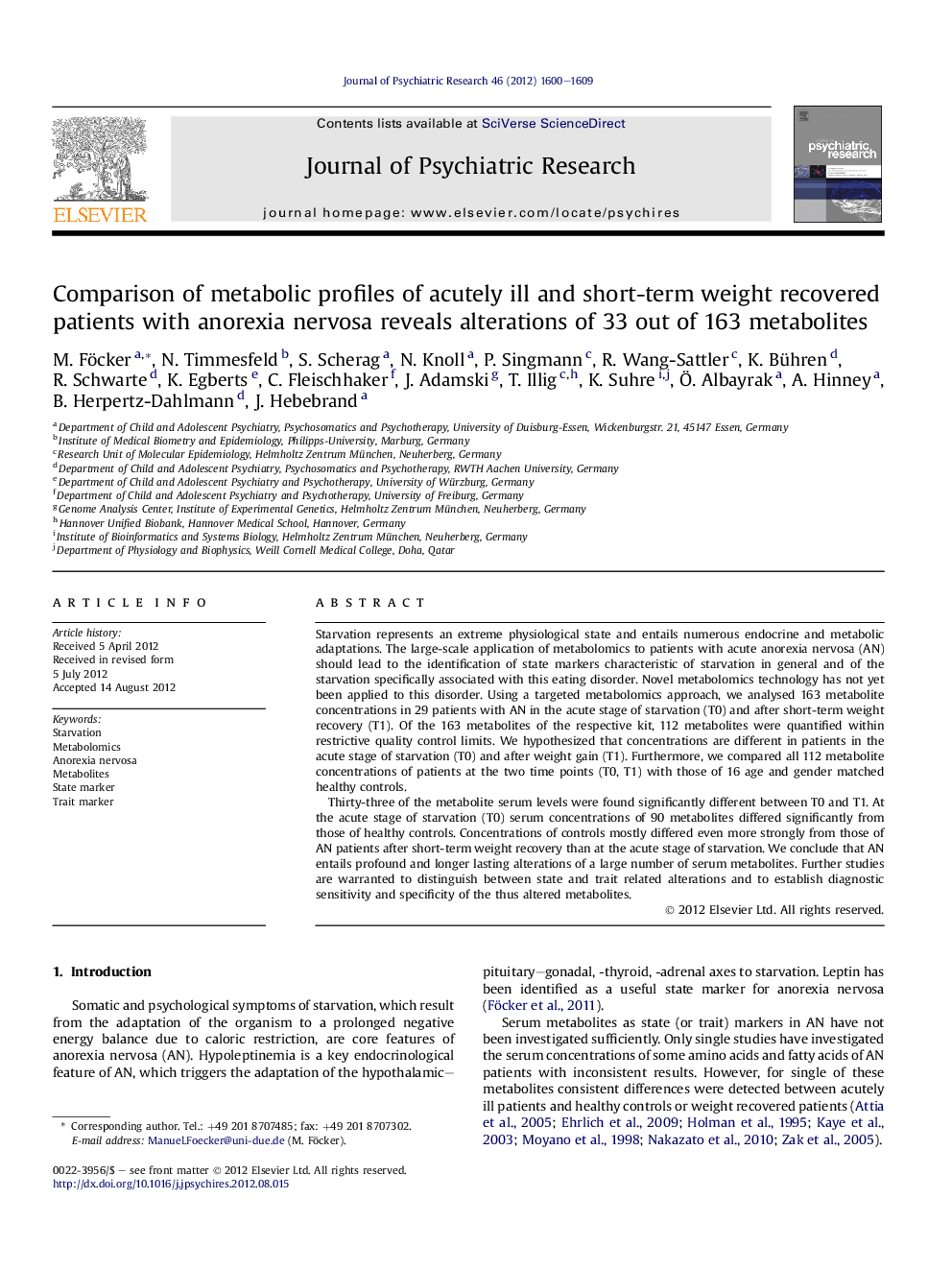| Article ID | Journal | Published Year | Pages | File Type |
|---|---|---|---|---|
| 327702 | Journal of Psychiatric Research | 2012 | 10 Pages |
Starvation represents an extreme physiological state and entails numerous endocrine and metabolic adaptations. The large-scale application of metabolomics to patients with acute anorexia nervosa (AN) should lead to the identification of state markers characteristic of starvation in general and of the starvation specifically associated with this eating disorder. Novel metabolomics technology has not yet been applied to this disorder. Using a targeted metabolomics approach, we analysed 163 metabolite concentrations in 29 patients with AN in the acute stage of starvation (T0) and after short-term weight recovery (T1). Of the 163 metabolites of the respective kit, 112 metabolites were quantified within restrictive quality control limits. We hypothesized that concentrations are different in patients in the acute stage of starvation (T0) and after weight gain (T1). Furthermore, we compared all 112 metabolite concentrations of patients at the two time points (T0, T1) with those of 16 age and gender matched healthy controls.Thirty-three of the metabolite serum levels were found significantly different between T0 and T1. At the acute stage of starvation (T0) serum concentrations of 90 metabolites differed significantly from those of healthy controls. Concentrations of controls mostly differed even more strongly from those of AN patients after short-term weight recovery than at the acute stage of starvation. We conclude that AN entails profound and longer lasting alterations of a large number of serum metabolites. Further studies are warranted to distinguish between state and trait related alterations and to establish diagnostic sensitivity and specificity of the thus altered metabolites.
